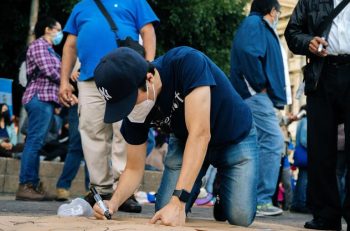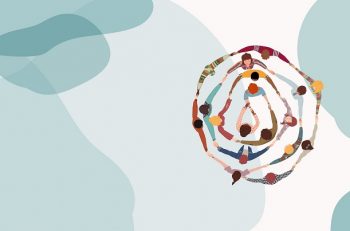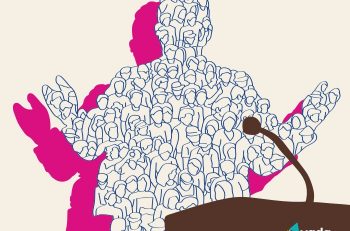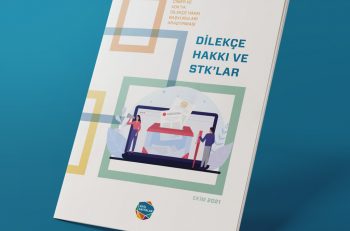Motivated But Introverted: Civil Society

The area covered by the ‘state’ in Turkey has been above its counterparts since the Ottoman Empire. Political, intellectual debates were not about the debate itself, about ideals, about differences of opinion. On the contrary, the focus was the state and the aim of saving the state.
In the modernization process, the idea of state apparatus, which was organized and equipped in parallel to the entire world in Turkey, expanded from the field and the metropolis to the material field and the countryside. Although the borders of the state have changed in Turkey’s two-hundred-year history of modernization, this expansion relationship with society has not changed.
Civil society in Turkey has always remained in the shadow of the state. From the end of the 70s and the beginning of the 80s, with the rapid urbanization and increasing communication opportunities, with the contribution of the EU process, it was observed that civil society came to the fore as the third sector in parallel with the entire world. In recent years, it can be said that civil society has stalled with an optimistic view. Osman Kavala, one of the symbols of civil society, was arrested on 1 November 2017. Kavala has been in prison since the day he was arrested. The pressure symbolized by the name Kavala, who was sentenced to aggravated life imprisonment despite the decisions of the ECHR, is felt on the entire civil society. With the Gezi Park protests, the end of the Solution Process and the July 15 coup attempt, the pressure on civil society increased. Pandemic and economic crisis conditions were added to these pressures. With the blockage of the EU process, this regression became more concrete.
In the ‘Future of Civil Society’ report, the needs and motivations of different non-governmental organizations were investigated using quantitative and qualitative methods. During the research, non-governmental organizations were divided according to the fields they were involved in, as well as categorized in terms of where they stood in the secular-religious polarization.
Organizations in research have been categorized as patronage associations, self-organizations, profession/sector-oriented associations, expert associations, philanthropist associations, fellow citizen associations, and advocacy associations.
When the results of the research are followed in the context of categories, it will be seen that the motivation of the members of civil society is high. It is observed that the anxiety levels of civil society supporters increase as their political distance from the government increases. While high motivation was observed in general, issues such as the organizations not being active enough and the society not showing enough interest were also identified at the end of the research. Likewise, civil society activists who see their own reputation as high do not see their reputation as high in the eyes of the society and the state. In addition, religious structures in general see their prestige in the state high, while secular structures find their prestige low in the state, as expected. Although civil society activists find the capacity, effectiveness, and activity of civil society low, they find the motivation high. However, it will be seen that young people are significantly less satisfied with this motivation than the older people. As for the effect of civil society, when the results are examined, it may be seen that there is a significant optimism, although there is an increasing pessimism as the political position of civil society activists becomes oppositional, as civil society activists become younger and their education level increases.
As a result of the research, it was observed that groups with high ideological or religious motivation are more optimistic about the impact of civil society activities on society.
Although it has been observed that groups close to the government are more optimistic about the situation and future position of civil society compared to 5 years ago, it can be said that optimistic and pessimistic views are generally balanced.
When it comes to the problems of civil society, it is seen that financial constraints come to the fore outside of professional organizations. In addition to all these, it can be said that the confusion in the legislation after the transition to the Presidential Government system also created a communication problem.
In addition to external problems, civil society in general is pessimistic about economic opportunities, productivity, institutional capacity. While a pessimistic view on freedom stands out in structures with high political motivation, professional organizations and charitable organizations have fewer concerns in this area.
In general, there is a differentiation between philanthropy-themed structures and rights defenders, which are seen as more traditional in the interest of the society. The fact that the habit of transferring resources to civil society has not developed except for philanthropy in Turkey has come to the fore in the research as a phenomenon felt by all NGOs that have a resource problem.
It should also be investigated whether there is a dire situation that exceeds the answers to the questions that measure the law and public pressure. Because in the last 10 years, it should be kept in mind that relatively less motivated and less politically engaged civil society activists who would be worried about such pressures may have already withdrawn from civil society. More than 50% of the answers to questions about arrest, trial, ban on events or the closure of the association should be read like this. The high motivation felt by the participants throughout the study is naturally reflected in the answers.
Conclusion
This and similar studies may have meanings beyond what they show at first glance. It can be thought that those who remained in civil society after 10 years of decline were relatively highly motivated, idealistic individuals. When we look at the research, we see people with high motivation, religious or social concerns, who set out for philanthropic purposes. It can be seen that the motivation rate of civil society, which seems positive in terms of human resources, actually shows the narrowness of the human resources pool of civil society. If the rates that seem optimistic are considered together with the decreasing capacity and financial opportunities, it will be seen that the civil society is withdrawing in the face of the pressures. It is understood that civil society is trying to survive by gradually delaying its claim to transform society in the face of oppression. In both traditional and new media, non-governmental organizations constantly have to defend themselves against the allegation of being the bearer of a claim.
In addition to the material and legal needs of civil society, the basis for its development should also be considered. A culture that demands only the state against social problems prevails in Turkey. The function of many non-governmental organizations, like fellow citizens’ associations, is to make the demands from the state systematic. To overcome all this, civil society must have equitable access to public resources, civil society professionals must be able to progress as a career in civil society, and volunteers and donors must be both better represented and broadly rewarded. Civil society should gain access to the whole society beyond being the domain of a group of faithful and motivated individuals.
Photo: Meriç Dağlı











Bizi Takip Edin